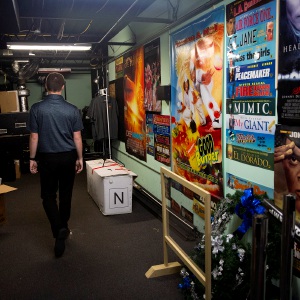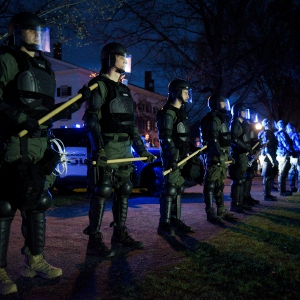Hanover High students to chase eclipse across country
| Published: 10-01-2023 2:06 AM |
HANOVER — The moon will eclipse the sun twice in the next six months. At both instances, a squad of Hanover High students will be pulling the strings on a NASA atmospheric balloon project meant to collect data on the celestial phenomena.
In February, Hanover High was among five high schools selected to participate in the Nationwide Eclipse Ballooning Project. The NASA and National Science Foundation-funded effort is bankrolling data collection during the pair of eclipses.
The group has shipped its equipment off to La Pine, Ore. On Oct. 11, the students will follow, gearing up to launch their balloon three days later, when the annular eclipse is visible over the West Coast state on Oct. 14. Annular eclipses occur when the moon is farther away from earth in its orbit, and so cast a smaller shadow over the sun than a total eclipse.
On April 8, the team will launch another balloon in Burlington, when the total eclipse passes over portions of the Twin States. The students’ experience in Oregon will be a test run for documenting the partial eclipse’s springtime super-twin.
When the total eclipse occurs, the Upper Valley will be just south of the path of totality. But residents will still be able to witness a partial eclipse.
During an eclipse, safety goggled-viewers are able to see the outer layer of the sun’s atmosphere, known as the corona. The corona normally is obscured by the sun’s light, but is revealed when the moon passes in front of the sun.
Witnessing the corona is like seeing “a link between really our planet and the rest of the solar system,” said high school senior Kavi Patel, who’s a member of the team.
The research that the Hanover High group is doing on behalf of NASA is to collect data “about how our planet works on the macro scale,” Patel said.
Article continues after...
Yesterday's Most Read Articles
 Dartmouth moves swiftly to stymie demonstration, leads to 90 arrests
Dartmouth moves swiftly to stymie demonstration, leads to 90 arrests
 Claremont movie theater to close at end of May
Claremont movie theater to close at end of May
 Colby-Sawyer names interim president
Colby-Sawyer names interim president
 Kenyon: Dartmouth shows it has no patience for peaceful protest
Kenyon: Dartmouth shows it has no patience for peaceful protest
 Lebanon High senior comes to the aid of driver with health problem
Lebanon High senior comes to the aid of driver with health problem
Hanover High was the only high school on the East Coast selected to join the NASA project, and just one of five high schools out of 110 participating groups. The students’ travel is funded by a series of grants, including funding from the Byrne Foundation.
Not to be confused with the unmarked Chinese balloon that caused a stir last winter as it traveled over the continental United States, the balloons that NASA sent the group to operate are about half the size of a Volkswagen Beetle, said Hanover High science teacher Kevin Lavigne, who leads the group, “and don’t look so technical.”
Launched into the second layer of the earth’s atmosphere, called the stratosphere, 10 to 15 feet of string dangles below the balloon, supporting seven “orange, shoebox looking compartments” that hold sensors measuring temperature, pressure and wind direction and speed, Lavigne said.
The balloons are also examining what happens in a section of the atmosphere directly affected by Earth’s surface, called the boundary layer. The depth changes according to temperature, and it’s anticipated that during an eclipse the layer descends.
Additionally, the sensors could capture gravity waves, which occur in a stable layer of the atmosphere. Caused by the displacement of air, the waves can create a rippled pattern in high clouds.
Since work began on the project, the group has launched three practice balloons. The first launch only reached around 3,000 feet and didn’t make it more than 10 miles from Hanover, Lavigne said.
Hoping to top out at nearly 95,000 feet, the second launch did better, but came in at only about half that height. The group eventually had to abandon the balloon due to unfavorable atmospheric conditions.
Finally, a third launch from Randolph attained the desired altitude and distance.
“But ultimately, all of us went to northern New Hampshire to spend two hours trying to get it out of a tree,” Lavigne said.
When it becomes crunch time in Oregon, after an hour of set up and two hours to reach altitude, the team will have a 15-minute window to place the balloon in the path of the eclipse.
NASA’s balloons don’t operate like hot air balloons, which drop quantities of sand to ascend and release gas to descend.
“We’re really threading the needle with a balloon we can’t control,” Lavigne said. “With these, you’re just relying on wind and atmospheric conditions.”
Still, it’s all in the hopes of making the most of April’s total eclipse, which will be the last to pass over the United States until 2045.
“We’ve been given such an amazing opportunity,” Patel said.
It will be 375 years until the next time there’s an eclipse over Burlington, scientists estimate.
“The April sky will go dark as if it’s nighttime,” Patel said. “Animals will think that it’s night and go to sleep. Birds will begin to roost.”
But the Hanover High students will be hard at work.
Frances Mize is a Report for America corps member. She can be reached at fmize@vnews.com


